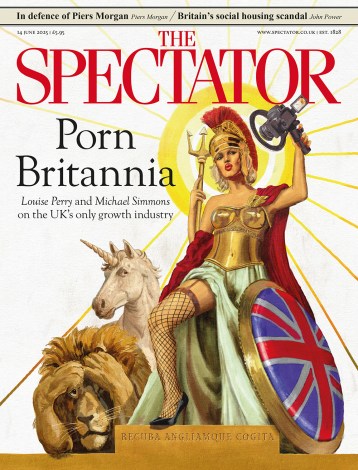The illustration shows a smiling couple on a yacht, the wind ruffling their hair and the coastline receding into the distance behind them. Above it are the words: ‘Work out of London – get more out of life.’ Something from the post-Covid work-from-home era, perhaps, or Boris Johnson’s 2019 ‘levelling up’ election campaign? No – this is the work of ‘The Location of Offices Bureau’, set up by the Tory government in 1963 and abolished by Margaret Thatcher.
The advert appears on the wall of a decommissioned Tube carriage that’s one of many frozen in time in a warehouse in west London. In the latest issue of The Spectator, Richard Morris writes that museums often have a ‘wealth of treasures… hidden away in storage’ and argues that more should open their vaults. The London Transport Museum Depot in Acton is an object lesson in how to do this. The 65,000 sq metre unit exists primarily to store, catalogue and preserve objects from the London Transport Museum’s collection – and three times a year, it opens its doors to the public.
With live music, food stands and a programme of talks and activities, these ‘open days’ have a vibe more like a festival than a museum. But the main draw is the 320,000 items kept here, which include road and rail vehicles, engineering equipment and drawings, signs and maps, tiles and ticket machines, signalling systems, original artworks and posters, and all kinds of transport ephemera – as well as anything that doesn’t fit into the London Transport Museum in Covent Garden. Exhibits range from a cavernous tunnel lining ring that was used in the 1880s to build London’s first Tube railway to the electrical equipment that was installed under the floor of the first automatic passenger trains in the world, placed on stilts so visitors can see it in operation.

But it’s stepping inside the vehicles themselves that most vividly evokes the Britain of days gone by. Each bus and Tube carriage is like a time capsule, with everything from the upholstery and flooring to adverts and signage offering a snapshot of life on the day it left service.
‘A Double-Decker responds just as well to a woman’s touch – we already have a band of lady drivers to prove it’
Inside a surprisingly luxurious 1938 Tube stock car, varnished floors and deep-cushioned seating give a teasing glimpse of a much more comfortable commute – beneath adverts promoting ‘Embassy Number 1. Every time’ and ‘Don’t wait… Dial 168… for Racing Results’. (Though some things haven’t changed – another poster reminds passengers: ‘When waiting for your train, please let people off first.’)
A 1967 Tube stock train that went out of service in 2011 offers adverts for an Aer Lingus flight from Gatwick to Dublin for £29.99 and ‘The All-New Kindle’ for £109. There’s also a ‘Smart phone, smart plan’ for an HTC Wildfire Red with 3.2in touch screen and ‘packed with Facebook, Flickr and Twitter’ – yours for £30 a month.
On a fleet of buses from the past century and beyond, adverts for Wills’s Capstan cigarettes, Brymay safety matches and Watneys beer abound. A gleaming 1880s horse bus (top speed 8mph, capacity 28) and 1910s B-type motor bus (top speed 16mph, capacity 34 – though 18 of these had to brave the uncovered top deck) sit alongside a double-decker ‘Blitz bus’ with anti-splinter netting on the windows to protect passengers from shattering glass in a bomb blast. Nearby is a 1920s ‘pirate’ bus, a reference to the days when multiple bus companies operated in London and smaller firms would run services a minute ahead of rivals to try to steal passengers. (Imagine that next time you’re stranded at the bus stop at rush hour.)

A 1966 issue bus has an on-board turnstile that demands 20p in 5p and 10p coins for entry – fortunately deactivated in these cashless days. The route map on the wall inside comes from the days when retail stores constituted landmarks and is littered with London’s ghosts: ‘HIGH HOLBORN (Pearl Assurance)’, ‘PICCADILLY CIRCUS (Swan & Edgar)’, ‘MARBLE ARCH (C&A), FLEET STREET (Daily Telegraph).’ Beside it is an advert showing a smiling woman at the wheel of a bus. The caption? ‘Who needs women drivers and pays them really good money? London Transport do. A Double-Decker responds just as well to a woman’s touch – we already have a band of lady drivers to prove it.’
Today, Londoners’ commutes are wallpapered with images warning against ‘intrusive staring’ and promoting assisted dying. The late American comedian Bill Hicks once said ‘If you want to understand a society, take a good look at the drugs it uses’. I’d suggest you also could also take a good look at the adverts on its public transport network.
The next London Transport Museum Depot Open Days are 6-8 June.







Comments